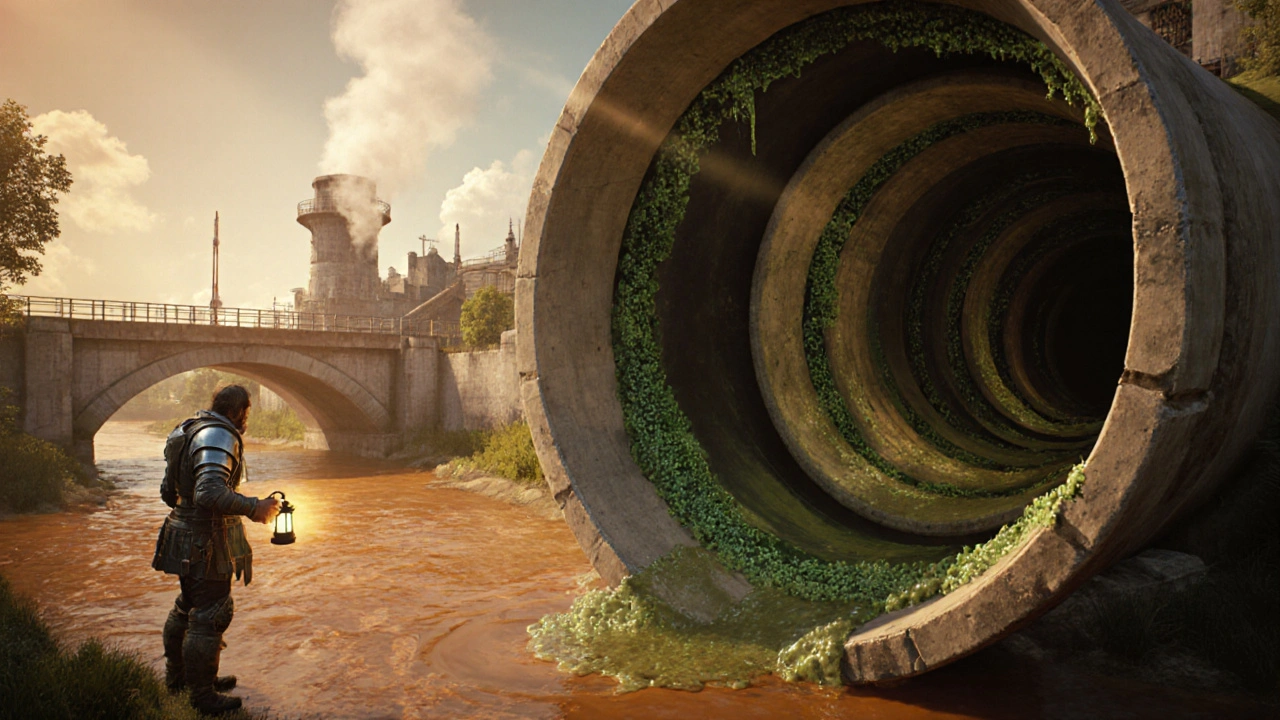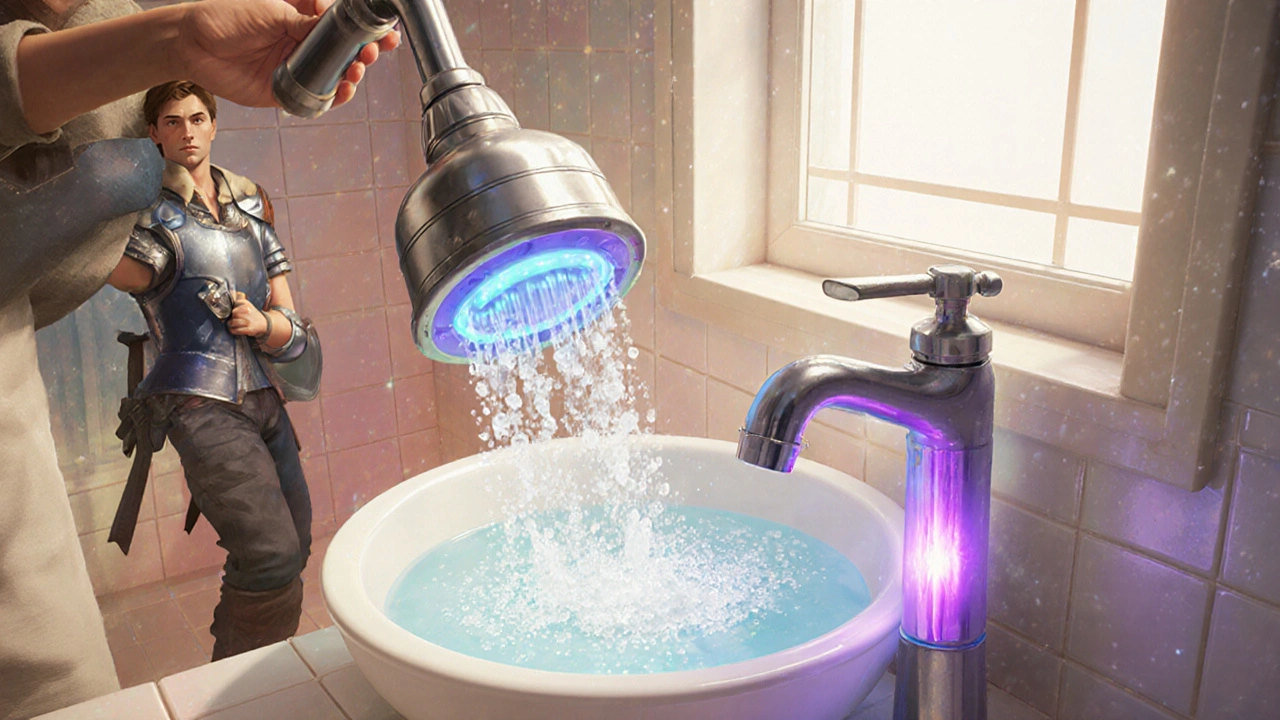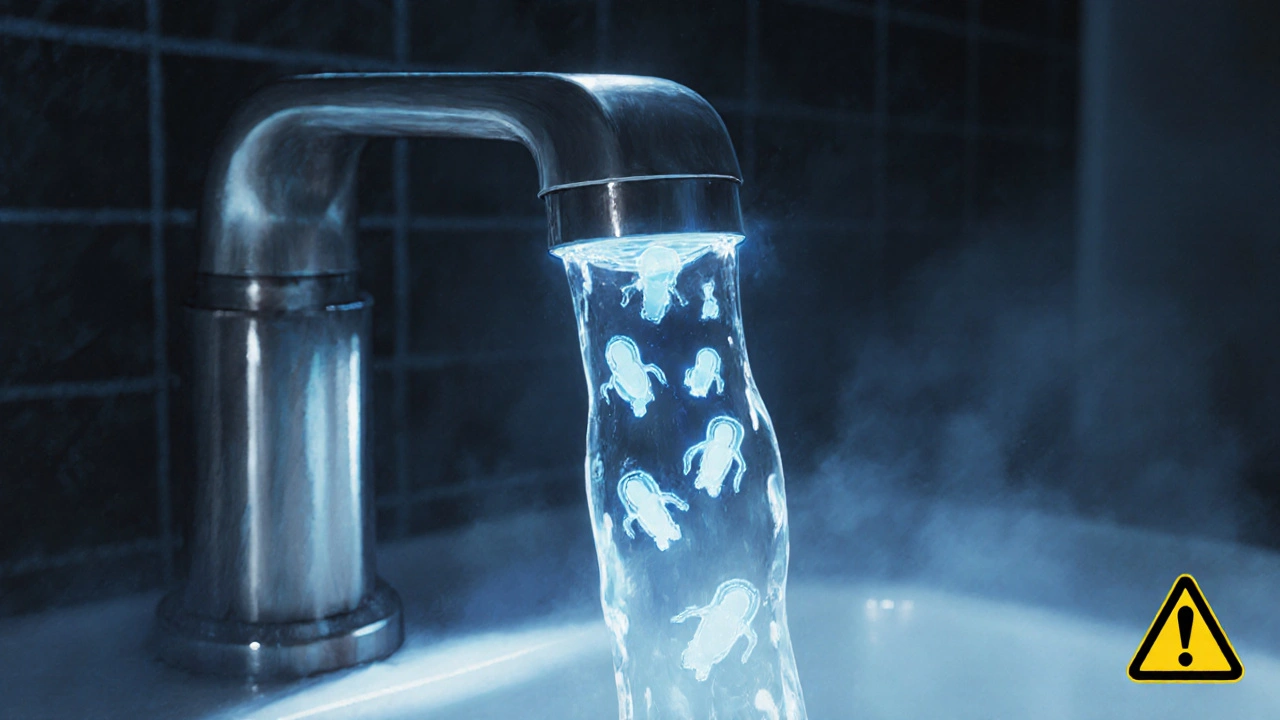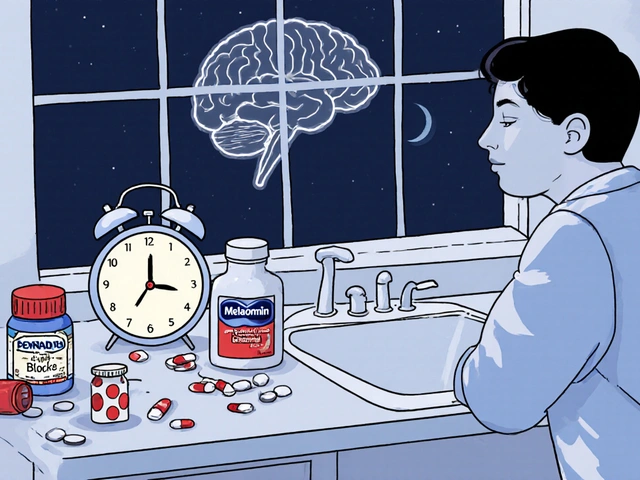Amoeba Risk Calculator
This tool helps you assess your personal risk of amoeba exposure based on your water usage habits and prevention measures. Results are based on information from the CDC and water safety guidelines.
When you turn on the tap, you expect clean, safe water. Yet a hidden threat can lurk in the very supply we trust: Amoeba infections are rare but rapidly fatal illnesses caused by microscopic, single‑cell organisms that thrive in warm freshwater and inadequately treated water systems. This article breaks down how these parasites get into our water, which species pose the greatest danger, what symptoms to watch for, and practical steps you can take to protect yourself and your family.
Quick Takeaways
- Three free‑living amoebas-Naegleria fowleri, Balamuthia mandrillaris and Acanthamoeba spp.-are responsible for the majority of water‑related cases.
- Infection usually follows nasal exposure to warm, untreated water; the brain is the primary target.
- Early symptoms mimic flu, but rapid neurological decline can occur within 24‑72hours for Naegleria fowleri.
- Standard municipal treatment (chlorination) kills most amoebas, but warm‑water systems, private wells, and home‑brew kits remain vulnerable.
- Simple prevention-regularly cleaning shower heads, using UV or sub‑micron filters, and avoiding warm stagnant water-cuts risk dramatically.
How Amoebas Enter Water Systems
Free‑living amoebas are natural inhabitants of soil and freshwater. They enter municipal supplies mainly through three pathways:
- Surface water intake. Rivers, lakes, and reservoirs feed many treatment plants. If source water temperature exceeds 25°C, amoebas multiply quickly.
- Groundwater intrusion. Heavy rains can push surface water into wells, contaminating private supplies that lack treatment.
- Biofilm formation. Inside pipes and storage tanks, biofilms provide shelter from disinfectants. Amoebas can embed themselves in the slime, surviving standard chlorination doses.
While most public utilities maintain residual chlorine levels that inactivate Naegleria fowleri within minutes, certain scenarios reduce effectiveness: high water temperature, low pH, or short contact time. Home‑brew fermenters, hot tubs, and decorative fountains often operate at temperatures (30‑45°C) perfect for amoeba growth.
Major Pathogenic Amoebas
Three species account for the overwhelming majority of human disease linked to water:
| Species | Typical Habitat | Associated Disease | Incubation (days) | Mortality Rate | Treatment Options |
|---|---|---|---|---|---|
| Naegleria fowleri | Warm freshwater lakes, ponds, hot tubs (30‑45°C) | Primary amoebic meningoencephalitis (PAM) | 1‑9 (often <3) | ≈97% | Miltefosine + amphotericinB, aggressive supportive care |
| Balamuthia mandrillaris | Soil, dust, warm stagnant water | Granulomatous amoebic encephalitis (GAE) | 5‑30 | ≈90% | Combination of azithromycin, fluconazole, sulfadiazine, flucytosine, miltefosine |
| Acanthamoeba spp. | Soil, tap water, contact‑lens solutions | Acanthamoeba keratitis; also GAE (rare) | 2‑30 (keratitis) | Keratitis: 70‑80% treated successfully; GAE mortality ≈95% | Topical PHMB or chlorhexidine for eye; systemic therapy similar to Balamuthia for GAE |
All three species share a life‑cycle stage called a trophozoite-the active, feeding form that drives tissue invasion. Under harsh conditions they form cysts, which are highly resistant to chlorine and desiccation, making eradication tricky.

Health Risks and Symptoms
The disease profile differs by species, but common early signs include:
- Headache (often severe)
- Nausea or vomiting
- Fever
- Neck stiffness
- Altered mental status (confusion, seizures)
For Naegleria fowleri infections, symptoms can progress to coma within 48hours, because the organism directly invades the brain via the olfactory nerve after swimming or diving with water up the nose. A hallmark is a sudden spike in intracranial pressure detectable on CT scans.
In contrast, Balamuthia mandrillaris and Acanthamoeba infections tend to have a slower onset, often weeks after exposure, and may present with focal neurological deficits, skin lesions, or, for Acanthamoeba, painful corneal ulcers in contact‑lens wearers.
Because early signs mimic common viral illnesses, clinicians frequently miss the diagnosis until advanced neuro‑imaging reveals characteristic lesions. Prompt lumbar puncture and PCR testing of cerebrospinal fluid (CSF) are essential for confirming the pathogen.
Detection and Testing Methods
Detecting amoebas in water is more complex than testing for bacteria. Laboratories typically use two approaches:
- Culture on non‑nutrient agar. Water samples are filtered, and the filter is placed on agar seeded with bacteria (E.coli) to promote amoeba growth. Observation under a microscope reveals motile trophozoites.
- Molecular assays (PCR). Real‑time PCR targets species‑specific DNA sequences, offering rapid results (<24h) and higher sensitivity for cyst detection.
For hospitals, CSF PCR panels now include Naegleria fowleri, Balamuthia mandrillaris and Acanthamoeba. Negative results do NOT guarantee safety, especially when cysts are present in low numbers.
Prevention Strategies for Homeowners
Most infections occur in settings where water is warm, stagnant, or inadequately disinfected. Below are evidence‑based steps that dramatically lower risk:
- Maintain water temperature. Keep hot‑water heaters below 48°C (118°F). Install thermostatic mixing valves to avoid accidental scalding and to limit amoeba growth.
- Regularly clean shower heads and faucet aerators. Soak in a 1% bleach solution for at least 10minutes weekly; rinse thoroughly.
- Use point‑of‑use filters. Filters rated 0.2µm or smaller (e.g., NSF‑53 certified) remove both trophozoites and cysts.
- Consider UV disinfection. A UV‑LED system delivering >40mJ/cm² inactivates >99.9% of cysts without affecting taste.
- Avoid nasal exposure. When swimming in warm lakes or hot tubs, keep the head above water or wear nose clips.
- Test private wells annually. Request both bacterial coliform and amoeba PCR testing from a certified lab.
For communities, upgrading treatment plants with advanced oxidation (e.g., ozone + UV) and ensuring a minimum chlorine residual of 0.5mg/L throughout the distribution system are proven to suppress amoebic proliferation.

What to Do If You Suspect Exposure
Time is the most critical factor. If you or a family member experiences sudden severe headache, fever, or neurological changes after water‑related activity, follow these steps:
- Seek emergency care immediately. Mention any recent swimming, hot‑tub use, or well water consumption.
- Ask for CSF analysis. Request PCR testing for free‑living amoebas; inform the lab that you suspect Naegleria fowleri if exposure fits.
- Begin empiric therapy. While waiting for results, many hospitals start an aggressive cocktail (amphotericinB, azithromycin, miltefosine, fluconazole) because delays increase mortality.
- Notify public health authorities. They can issue boil‑water advisories or investigate potential source contamination.
Even with optimal care, survival odds remain low for PAM, but early intervention can improve outcomes for GAE and keratitis.
Key Takeaways
Although amoeba infections are rare, their fatality rate makes them a public‑health concern that’s easy to overlook. Understanding the three main culprits-Naegleria fowleri, Balamuthia mandrillaris, and Acanthamoeba spp.-helps you recognize risk factors, spot early symptoms, and adopt practical prevention measures. Keep water temperatures low, maintain good hygiene of shower fixtures, use certified filtration, and stay vigilant when using warm freshwater sources. Your proactive steps could be the difference between a routine swim and a silent killer.
Frequently Asked Questions
Can municipal water supply be infected with amoebas?
Yes, especially if the source water is warm and treatment processes are insufficient. Proper chlorine residuals and advanced oxidation typically keep levels safe, but biofilm‑laden distribution lines can harbor cysts.
What is the most effective way to kill cysts at home?
UV disinfection delivering >40mJ/cm² or filtration below 0.2µm reliably inactivates cysts. Boiling water for at least 5minutes also works but is impractical for regular use.
Are contact‑lens wearers at higher risk?
Yes. Improper lens cleaning solutions can become a breeding ground for Acanthamoeba, leading to painful keratitis. Always use sterile saline and replace cases regularly.
How often should I test my private well?
At least once a year for bacterial contaminants, and every two years for amoeba PCR if you use the well for drinking or bathing.
Is there a vaccine against brain‑eating amoebas?
No vaccine exists. Prevention relies on water‑treatment, temperature control, and personal protective habits.







October 16, 2025 AT 12:49
Listen up, America! Those so‑called “safe” water supplies are a joke, and the gov’t is too lazy to fix the warm watr that’s breeding brain‑eating amoebas. If you keep swimming in dirty lakes, you’re basically asking for a one‑way ticket to a nightmare. Stop whining and clean your damn shower heads already.